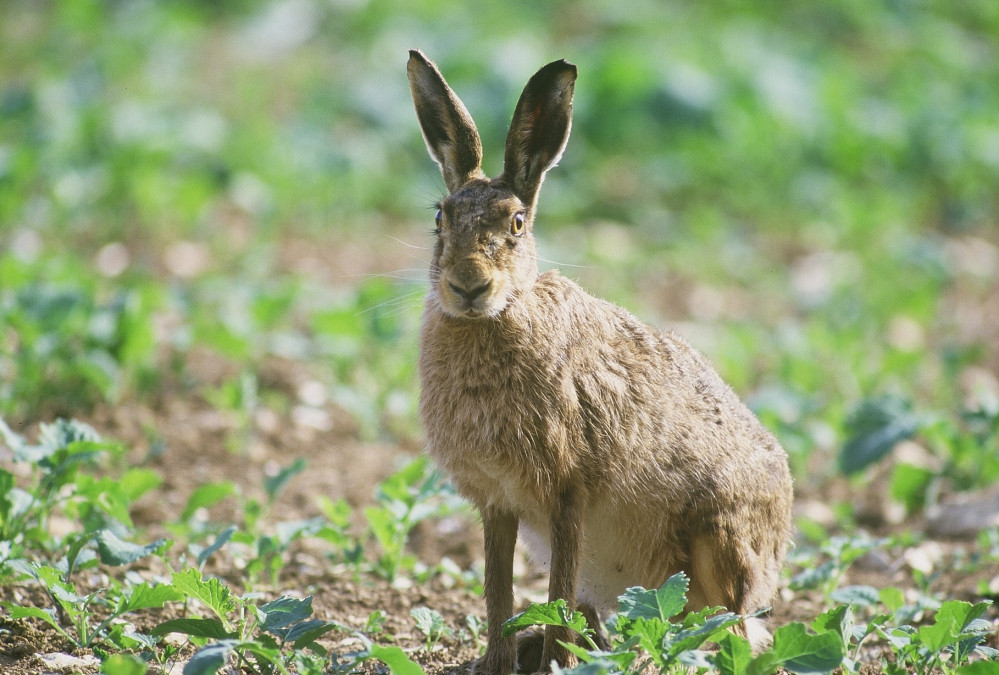Brown hare

Status
Naturalised and common
Population
579,000
Scientific name
Lepus europaeus
It is thought that the brown hare originated in the grasslands of central Asia and were introduced into Britain during Roman times. Brown hares are much larger than rabbits and have tawny fur and very long, black-tipped ears. They live exclusively above ground, resting in shallow excavations, called forms, up to 10cm deep. Speed is their main defence and they can run at up to 72 km per hour to escape predators. As they run, they tuck their tail down so that the white underside is not visible – unlike rabbits, which hold their tail up, flashing its white markings. Hares are mostly active at night and generally forage at dusk and dawn. Although they are mainly solitary, hares come together in small groups in late winter and during courtship, which often involves several males chasing a female.
Head-body length: 48 – 70cm
Ear length: About same length as head
Weight: 2 – 5kg (females are on average slightly heavier than males)
Lifespan: Typically 2 – 3 years; 5% of individuals live more than five years. The oldest known wild animal was 12.5 years old
Reproduction
Hares breed from February to September and females can have up to four litters per year, each of four young (called leverets) on average. Females look after the leverets on their own and the young are weaned after 3 – 4 weeks.
Diet
Grasses; young cereal and other arable crops. Shrubs are browsed in winter if snow makes grazing difficult.
Habitat
Mainly arable farmland; also grassland with sheltered areas in long grass, hedgerows and pasture.
Predators
Mostly foxes.
Threats
Agricultural intensification, grazing pressure and hunting (both as game and as a pest when numerous).
Conservation status
GB Red List: n/a.
Although a species of conservation concern, brown hares have minimal legal protection because they’re considered a game species and can be shot throughout the year, including through their breeding season. They are the only game species in the UK without a closed season (when hunting is prohibited).
GB population size and distribution
GB population 579,000. The British Trust for Ornithology’s Breeding Bird Survey, which records mammals a well as birds, shows an increase of around a quarter (27%) in the rural population between 1995 and 2022. In the last five years to 2022, there has been a 39% increase, following a 12% decrease between 1995 and 2016. An this offers some hope that the rabbit viral disease, RHDV2, hasn’t become established in hares.
Brown hares are widely distributed in GB, but are almost entirely absent from Ireland and north-west Scotland. They’re most abundant in lowland cereal-growing counties, particularly East Anglia and are rare in south-west England.
Did you know?
‘Boxing hares’ are females fending off the attentions of amorous males during courtship by standing upright and striking out with their front paws. This gave rise to the phrase ‘mad as a March hare’ but it occurs throughout the breeding season, over several months.
